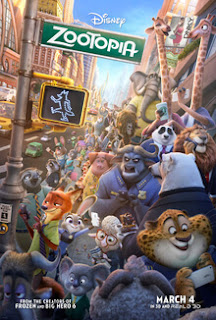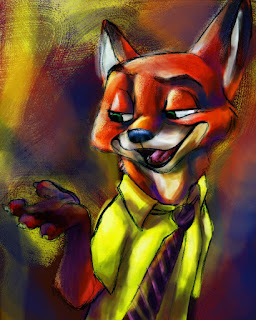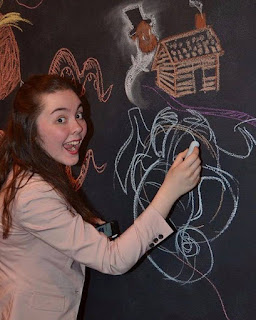Animator and webcomics artist Bob Scott has nothing to do with the DC-area. In fact, he has only been here as a teenage tourist, as he reveals later on in this interview. However, he's making the rounds to promote his new book, and sent me a very nice email, so why not expand our focus just this once in these odd times? He answered our usual questions, modified somewhat as necessary. First, here's a pocket biography, compiled from Bob's pages at Hermes Press and CTN.
Bob Scott lives in both the world of comic strips and animation. Born in Detroit, Bob began drawing at a young age, copying what he saw in the funny pages. Acceptance and graduation from California Institute of the Arts opened the world of character animation for Bob. He has worked over 35 years in the industry as an animator, character designer, storyboard artist and voice talent. Scott’s animated short 'Late Night with Myron' was part of the 1988 theatrical compilation film entitled 'Outrageous Animation'. His animation has been seen in numerous animated feature films such as Pixar’s 'Toy Story 3' (2010), 'Ratatouille' (2007), 'WALL-E' (2008), 'The Incredibles' (2004), Dreamworks Animation's 'The Prince of Egypt' (1998), Warner Brothers’ Bugs Bunny in Box Office Bunny (1990), and Turner Animation’s Cat’s Don’t Dance among others. He led the animation team on the Annie Award winning Pixar short 'Your Friend the Ratand' (2007) was part of the small animation crew for the Oscar-nominated 'Day and Night' (2010). He has worked for Jim Davis, co-penciling U.S. Acres and co-directing Garfield: His 9 Lives. Bob has always wanted a comic strip of his own, and so Bear with Me (aka Molly and the Bear) was born and became a syndicated webcomic in 2010.
What type of comic work or cartooning do you do?
I write and draw my own syndicated webcomic Bear with Me. I am also in the animation industry; I’ve been a 2D animator, a computer animator and a story artist. While animation is my full-time work, comic strips let me be my own artist.
How do you do it? Traditional pen and ink, computer or a combination?
Both!
I keep Bear with Me as traditional as possible. It’s a black and white, three to four panel comic strip. It’s the style and form that I grew up with and have never gotten tired of.
Bear with Me is drawn on Bristol board with a blue pencil and inked with a Windsor Newton brush using black India ink. I am such an old-school purist, I even hand letter the strip. Technology rears its head for the rest of the process: I scan the strip into Photoshop, digitally erase the blue pencil, do Sunday color, and make small adjustments as needed. I am like every other artist in this regard, while I try to not be a super-perfectionist, sometimes things just bug me and I can fix them in Photoshop.
When (within a decade is fine) and where were you born?
I was born in Detroit in 1964. I grew up in the suburbs with my parents and brothers. That makes me a true city boy. Right out of Cal Arts, Jim Davis hired me (and Brett Koth) to co-pencil his new strip, U.S.Acres. Jim ribbed me endlessly for not knowing how to draw a bale of hay.
Cartooning isn’t one of those jobs kids think of when they pick a profession. How did you end up in cartooning/ animation?
My mom and dad supported my pursuit of the arts 100%. Mom saw all the names in the TV animation credits and figured lots of people were working on these shows, so why not me? That was a rare and exceptional point of view. So many people are steered away from the arts.
As a teen I got the chance to talk with Larry Wright, the in house editorial cartoonist at the Detroit Free Press. (Wright Angles, Kit ‘n’ Carlyle) He gave me a lot of excellent advice – most notably “Write what you know.” I think it is important to see and talk to people actually IN the jobs you dream of because that lets you know it is possible, and they can help you map a course out.
Where do you live now, since it's not in the DMV?
I live in sunny Southern California. Is it the weather that drew me to LA? The beaches? Nope. SoCal is the epicenter of animation.
What is your training and/or education in cartooning?
I was trained as a traditional animator in the character animation program at Cal Arts. Which was great! I was there in the early 80s, so we learned 2D animation. That means we drew 12 to 24 drawings per second of film, 720 – 1440 drawings per minute of film. When you do that much drawing, you can’t help but get better. Also, you learn to give your drawings life even when they are not moving.
Working for Jim Davis taught me the ropes of comic strip production. He was a great guy and an excellent mentor in joke writing. Also, he knew a lot about hay bales. Handy knowledge.
My education in art is ongoing. I find the artists I work with are exceptional and so inspiring. I strive to be better every day and being around amazing artists helps keep me moving forward.
Who are your influences?
I love so many cartoonist’s and animator’s work. Ever since I was a kid, I loved animation. This may be because my mom propped me in front of cartoons as soon as I could sit up. She was an excellent mom, by the way. She supported my love of film and drawing 100%. As a kid, I would race home from school to watch Bugs Bunny, Tom and Jerry, The Flintstones and Popeye cartoons. On Sunday nights I was glued to The Wonderful World of Disney. I read the comics in our local paper. We had some obscure ones that I absolutely loved! Quincy by Ted Shearer and Eek and Meek by Howie Schneider. I later discovered Pogo and ate up Doonesbury and Bloom County in high school and college. I also love comedy! 70s and 80s SNL, The Blues Brothers, Abbott and Costello.
If you could, what in your career would you do-over or change?
I would make some of the projects I loved, like the animated feature Cats Don’t Dance, last years and years because I loved all the people and I loved the style of the film. It was funny, cartoony animation, my favorite kind.
I do wish that I lived closer to some of my comic strip artist friends. We speak a very specific language. Brett Koth (creator of Diamond Lil) and I are two peas in a pod, but we unfortunately live 3000 miles apart.
What work are you best-known for?
To my fellow animators, I am best known as a 2D animator. At Pixar, I got on every 2D project going. (The short Your Friend the Rat, Ratatouille end credits, Wall-E end credits, and the short Day and Night.) To anyone else who might follow my webcomic, I would be known for Bear with Me.
What work are you most proud of?
My comic strip! I just love doing it and I feel good about it. I have been drawing Bear with Me (aka Molly and the Bear) for well over ten years. I sort of rely on the strip to balance out my animation work. It’s just a really important creative outlet, a place for me to be me.
Got any big projects coming up?
 By golly,
I do! I have a brand new strip
compilation book coming out in
By golly,
I do! I have a brand new strip
compilation book coming out in February June from Hermes Press, titled Bear with Me (it’s been a rough day). It is jammed packed with over 400 strips,
peeks at my earliest attempts at making comic art, (yes, those embarrassing
strips from when I was 14) and the obligatory “My Process” section. It is a true labor of love, and Hermes
is doing a spectacular job putting it all together.
What would you like to do or work on in the future?
I’m doing a Bear with Me graphic novel that I cowrote with my wife, Vicki Scott. She’s an incredible artist and writer! She wrote and drew several Peanuts graphic novels such as It’s Tokyo, Charlie Brown for Boom Studios. I am also pitching Bear with Me as an animated show. Wouldn’t that be fun? But mostly, I would love to keep doing the strip.
What do you do when you're in a rut or have writer's block?
I have a lot of tools to get around writer’s block. Sometimes I’ll draw an entirely finished strip and write it afterwards. It’s a challenge but keeps my brain working. And it’s really fun! Sometimes a drawing will spark a strip, sometimes the writing comes first. Occasionally just walking away and coming back is the answer.
 What do
you think will be the future of your field?
What do
you think will be the future of your field?
There’s never been a better time for an artist that wants to get there work out there. Sure, there are fewer newspapers than when I was a kid, but I predict they will still be in business for a long time to come. Webcomics are the new kid on the block and they are here to stay. The creative energy in webcomics is really amazing. People are reinventing comic strips, changing the humor, expanding the formats. There has never been a more exciting time to be a cartoonist!
What cons do you attend?
As an exhibitor, I made the circuit of conventions along the West Coast a few years ago to promote my first compilation book Molly and the Bear. The conventions for me are full of mixed emotions. To go to San Diego Comic Con and watch what feels like a million people walk past my book without turning their heads was really depressing, but every once in a while, someone would stop and tell me they follow my strip every day and ask for a signature. Well, that made it all worth-while. My wife never passes up a chance to travel, so she and I have gone to cons in Germany and France to sign Peanuts comic books that we’ve drawn. I even got to do a book signing in Strasbourg, France for my book Molly and the Bear. That was really thrilling.
 What's your favorite thing about visiting DC?
What's your favorite thing about visiting DC?
My family and I went to DC when I was about 14. We did the whole monument tour, and I remember seeing the Watergate Hotel. Everything I knew about Watergate at that age I had learned from Doonesbury. So, seeing the Watergate hotel was like seeing a celebrity!
Incidentally, I went to Cal Arts with political cartoonist and fellow animator Ann Telnaes. She is tearing it up at the Washington Post. I love her work! She is the only Pulitzer Prize winner I know. I tried my hand at political cartoons and I can say with absolute conviction that what she does is much harder than it looks!
What monument or museum do you like to visit?
Seeing the Lincoln Memorial was really terrific. Especially because it was in Mr. Smith Goes to Washington. We visited the Smithsonian and that was incredible! I remember seeing Oscar the Grouch. See where I’m going here? My brain is all about movies and cartoons! Anything related to those two things is exciting to me. I have a one track mind.
How about a favorite restaurant?
My favorite restaurant in Washington DC? McDonalds! I was 14.
Do you have a website or blog?
Yes! You can find Bear with Me on
GoComics: https://www.gocomics.com/bear-with-me
Facebook: https://www.facebook.com/bearwithmecomic/
and Instagram: bobscott_bearwithme
How has the COVID-19 outbreak affected you, personally and professionally?
I have been extremely fortunate that my family and loved ones are all safe and healthy. I am also lucky that the animation industry is humming along at nearly full speed. Vicki and I both have animation jobs and have been working from home. Thank God the technology is there to be able to do that. It has been stressful to see all of this unfold and to see so many people suffering right now. I am just doing my part by staying home, wearing a mask when I go out and washing my hands like mad. I count our blessings and hope for everyone that it’s over soon.

















